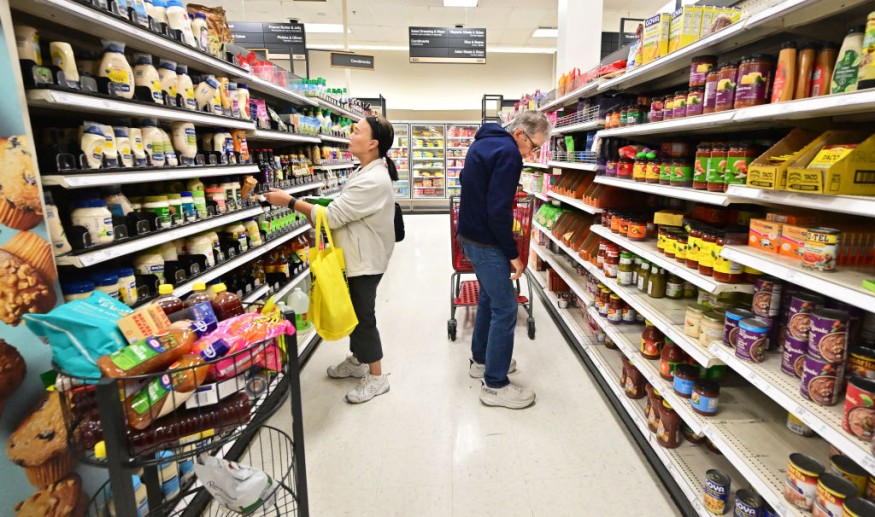Americans Feel More Optimistic as Prices Cool and Paychecks Increase
Americans' optimism about the economy and inflation is growing, potentially boosting consumer spending and economic growth, impacting Biden's electoral prospects.
The University of Michigan's consumer sentiment index has seen the largest increase since 1991. Inflation expectations are at a three-year low, and more respondents foresee improved personal finances.
Economic factors, including rising stock prices, falling gas costs, slowing inflation, and increased wages, contribute to improved consumer sentiment, counteracting the prior period of pessimism.
Americans are beginning to feel more optimistic about the economy and inflation after a protracted period of pessimism; this development might support consumer spending, spur economic growth, and perhaps have an impact on President Joe Biden's electoral prospects.

The University of Michigan's gauge of consumer mood has increased by the greatest amount since 1991 during the last two months. According to a Federal Reserve Bank of New York study, Americans' expectations for inflation have dropped to their lowest level in over three years.
Furthermore, according to the same study, which was published last week, the percentage of respondents who believe their own finances would be better in a year is at its highest point since June 2021.
According to economists, consumers seem to be reacting to increasing stock prices, decreased gas costs, progressively slowing inflation, and increased wages. From a peak of almost 9% in June 2022, inflation has dropped to 3.4%. When measured over the last six months, inflation has met the Federal Reserve's annual 2% objective, according to its preferred price gauge.
Furthermore, over the last year, incomes have increased faster than inflation, which has made it easier for Americans to adjust to rising living expenses.
According to official data released last week, the average worker's weekly wages increased 2.2% in 2017 after accounting for inflation. This worker is positioned midway between the wealthiest and lowest workers. By that metric, salary adjusted for inflation has increased by 2.5 percent from before the epidemic.
Impact of Consumer Inflation Expectations on Economic Dynamics
The reason consumer inflation expectations are significant is that they have the potential to spiral out of control. When consumers anticipate that inflation will remain high, they frequently alter their spending patterns by making larger purchases before prices increase, which can contribute to even more inflation. Lower inflation expectations, on the other hand, have the power to change that dynamic and moderate inflation.
Prices are still almost 17% higher than they were three years ago, despite a consistent decline in inflation, which has many Americans miffed. Even when the cost of certain particular commodities is decreasing, total costs will probably be much higher than they were prior to the epidemic.
Many voters are still dealing with the financial and psychological fallout from the greatest inflation in four decades, so this paradox of a sharp decline in inflation and a persistently high cost of living is likely to raise important questions in their minds.
Which factor, the sharp drop in inflation or the fact that most prices have increased significantly over the past three years, will be more significant in the upcoming presidential election?
Take the cost of food, which is one of the things that people buy the most of. From a year-over-year peak of 13.5% in August 2022, grocery inflation has dropped to only 1.3%. Even still, the average grocery basket now costs 20% more than it did in February 2021-right before the pace of inflation picked up speed.
The average price increase for chicken is 25%. Likewise, bread is. The price of milk has increased by 18% since the outbreak began.
Apartment rental prices have also skyrocketed and are continuing to rise at a rate higher than pre-pandemic levels. The annual increase in rental expenses is 6.5%, almost twice as high as it was prior to the epidemic. Rent increases were over nine percent a year at their height in early 2023.
Related Article : Unveiling the Wealth of Money Lessons Hidden in Social Circles
© 2026 MoneyTimes.com All rights reserved. Do not reproduce without permission.











